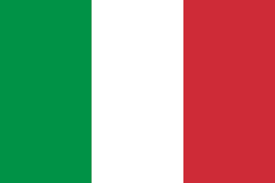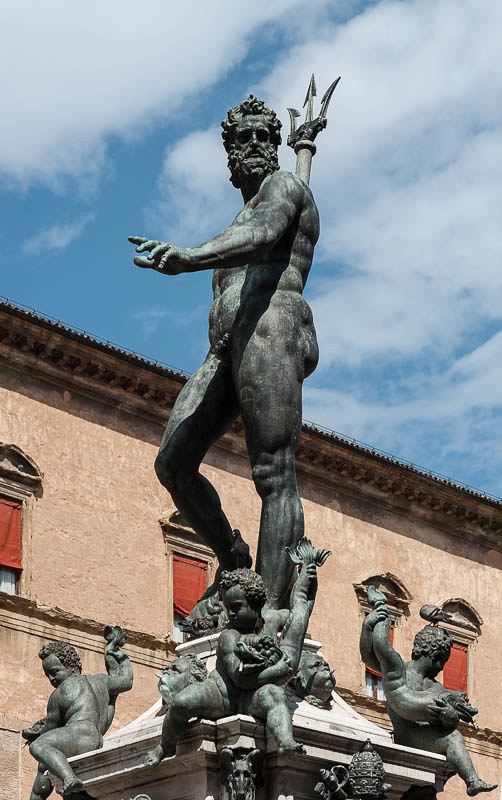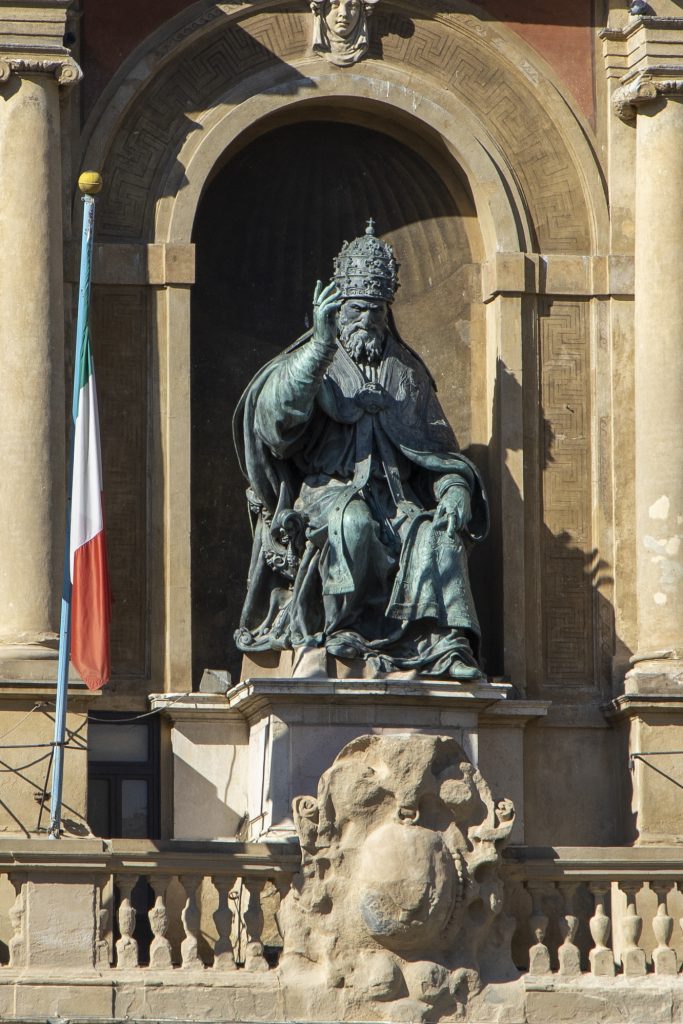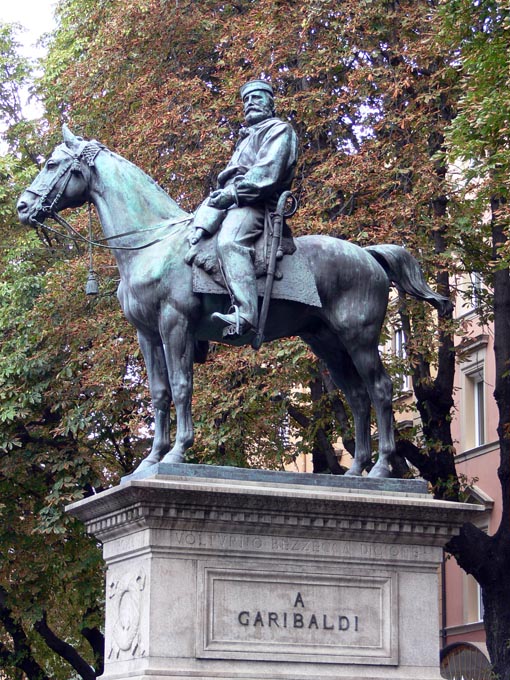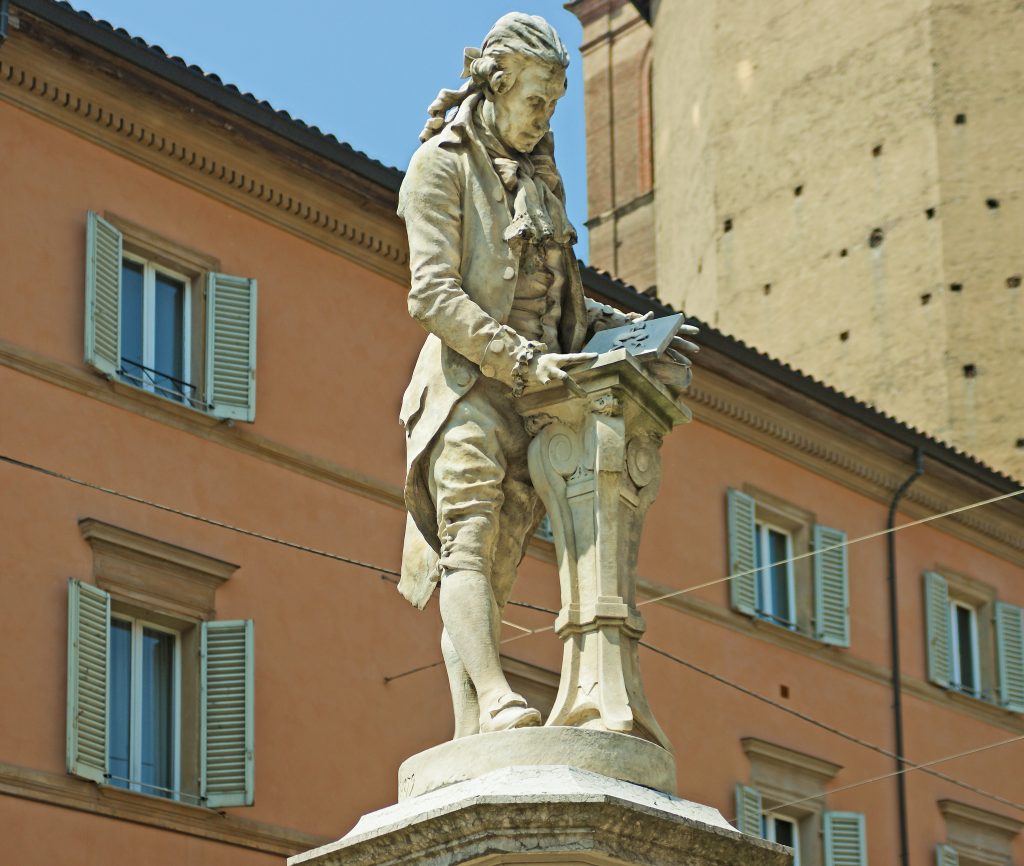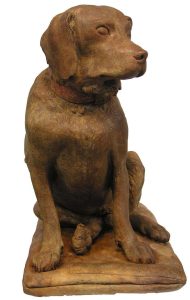Dedicated to the symbolic figures of Bologna, those who are part of its history, and others that have become emblems of the city itself: how many statues tell their own story of Bologna? Let’s visit a few!
Neptune
Any list of Bolognese symbols must always start with Neptune. It isn’t just a statue or a fountain, it is a masterpiece that has a special place in all of our hearts. Nicknamed “al Żigànt” by the locals (“the giant” in Bolognese dialect) due to its size, the fountain of Neptune was commissioned by the papal vice-legate Pier Donato Cesi to glorify the government of Pope Pius IV and was completed in 1566. The first important document recording the commission of the Fountain of Neptune was a short apostolic that Pope Pius IV addressed to the vice-legate Pier Donato Cesi on 14 March 1563. In this letter, the Pope declared that he wanted to take care of all the cities within the entire Papal State, including the realization of public works that would improve the quality of life. On 2 August 1563, the commission was assigned to the metalworker Zanobio Portigiani, the Palermo architect Tommaso Laureti, and the Mannerist sculptor Giambologna (of Flemish origin), to create a bronze statue of Neptune and accompany sculptural pieces.
Gregory XIII
This statue dominates Piazza Maggiore from atop the Town Hall with a deceiving inscription. Though the large bronze statue is accompanied by a large plague identifying it as San Petronio, it actually represents Pope Gregory XIII. This false inscription was part of a planned strategy by the Bolognese to protect it from the destructive fury of Napoleon, who, upon arriving in 1796, initiated a violent raid of Italy’s treasures and artworks so they could be taken to the Louvre museum in Paris.
Napoleon’s fury was also directed at effigies of popes and emperors. Thus, to save this statue of Gregory XIII, the Bolognese “disguised” him as San Petronio, knowing that the patron saint of the city would not be touched! They quickly cast a miter and a bishop’s crosier to adorn the statue and replaced the inscription, inaugurating the statue for a second time in 1797 with the name of San Petronio, thus saving the statue.
Giuseppe Garibaldi
Another famous Bolognese statue is of Giuseppe Garibaldi, found in Via Indipendenza. Though it was built just a few years after the general’s death, it wasn’t inaugurated until 7 July 1900.
After Garibaldi died in 1882, many cities were eager to pay homage to him through art. Bologna was no exception and immediately proposed plans for the monument on 3 July 1882, just a month after Garibaldi’s death.
To choose who would have the honor of creating such an important statue, a competition was organized with a great number of participants. In the end, Arnaldo Zocchi was awarded the role and all that remained was to select a location for the monument. Piazza XX Settembre was initially proposed, but this location was ultimately rejected by the panel of judges as well as by the artist himself. The Montagnola was also considered, but they finally decided to move a statue of Ugo Bassi from its spot halfway along Via Indipendenza and give it to Garibaldi instead.
Luigi Galvani
This statue has actually inspired a famous local expression: “è più facile che Galvani volti la pagina” (it would be easier for Galvani to turn the page). The famous Bolognese scientist has a statue all to himself in the square that bears his name, in the heart of Bologna. The reason for this local expression is easy to understand upon seeing the statue: Galvani is depicted with a book in front of him as he observes a frog, the famous protagonist of his experiments. That is why, when faced with a very difficult challenge, one might exclaim in frustration that it would be easier for the statue of Galvani to turn a page in his book!
Humorous anecdotes aside, the statue itself was created by the sculptor Adalberto Cencetti and was inaugurated on 9 November 1879.
The statue of the dog Tago
This statue of Tago was once on the windowsill of Palazzo Bersani, in Via Oberdan, where it was easily greeted by anyone walking around the city. It was sculpted in 1777 by Luigi Acquisti, commissioned by the dog’s owner, the Marquis Tommaso de Buoi.
The Marquis had rescued the Weimaraner hound when he found him abandoned in the countryside, and the two became very attached. One day, Tago became overjoyed upon seeing the Marquis returning home after a long journey and eagerly jumped from a window to greet his master. Unfortunately, the fall proved to be fatal and the distraught De Buoi wanted a statue honoring the loyal dog to be placed right in front of the windowsill from which he had fallen. The statue remained there for 200 years, until a careful restoration resulted in Tago moving to the Municipal collection of Palazzo D’Accursio.
Have you seen other statues around Bologna?
Share them with us at ufficio.stampa@succedesoloabologna.it
Discover Bologna with us


